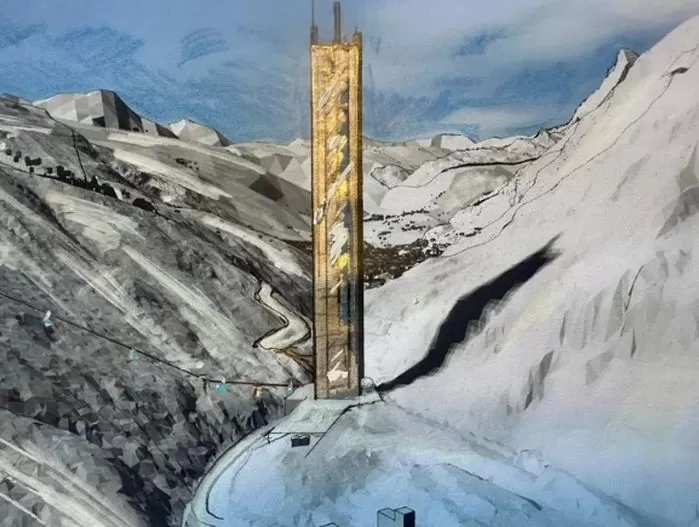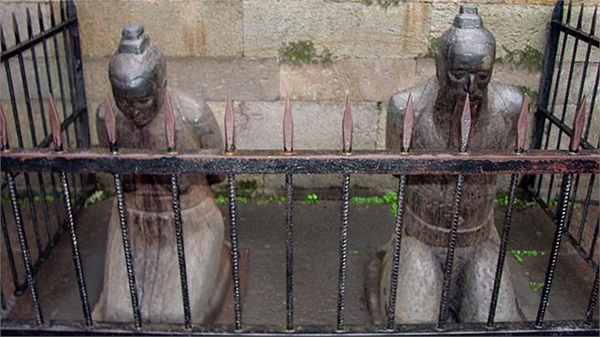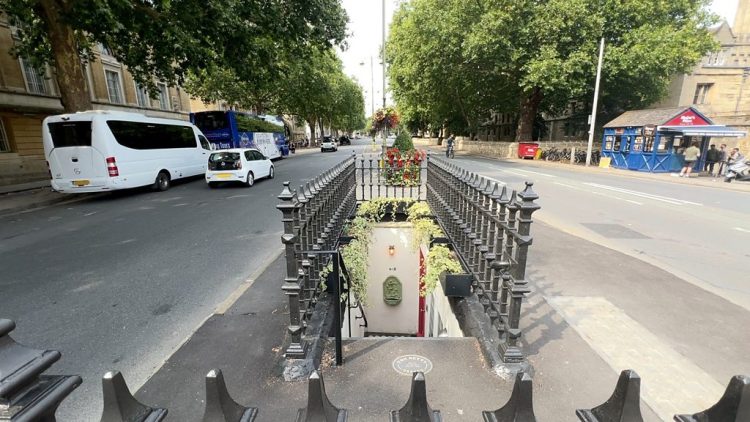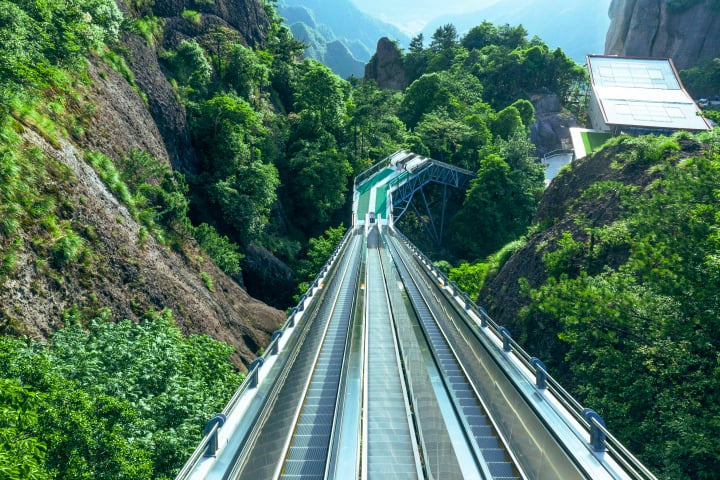Santa Cruz del Islote – The World’s Most Densely Populated Island

Santa Cruz del Islote, an islet in Colombia’s San Bernardo Archipelago, only covers the area of two football fields, but it has a population of over 1,200 people.
Plans to Build Skyscraper in the Heart of the Swiss Alps Spark Controversy Among Locals

A Swiss hotelier and architect recently revealed plans to build a 65-floor skyscraper overlooking the Matterhorn in the Swiss Alps, as a way to offer affordable housing.
Volvo Island – How a Swedish Sedan Became Stranded in the Middle of an Artificial Lake

For over 13 years, a Volvo Sedan has been parked on Volvo Island, a tiny islet in the middle of a man-made lake near Ottawa, Illinois.
The World’s Oldest Living Grapevine Has Been Around for Over 400 Years

A 416-year-old wild grapevine in the mountains of eastern Tibet was recently acknowledged by Guinness World Records as the world’s oldest living vine.
China’s Most Hated Statues Get Slapped Hundreds of Times a Day

For over five centuries, the statues of Qin Hui, a former chancellor of the Song Dynasty, and his wife have been slapped, kicked, and spit on by millions of people. In the heart of Hangzhou, forever facing the impressive mausoleum of a brave general they once framed and got executed, are the statues of Qin […]
Rope-Free Bungee Jumping from the World’s Highest Bridge Sparks Online Controversy

A ropeless bungee jumping attraction from the world’s highest road bridge has been suspended before its inauguration after videos of safety tests sparked fear on social media. After making news headlines as the world’s highest road bridge, the Huajiang Grand Canyon Bridge was again in the news recently, this time for a controversial attraction that […]
Underground Public Toilet Gets New Lease on Life as Boutique Hotel

The Netty, a cozy boutique hotel located down a flight of stairs, in the middle of St. Giles Road, in Oxford, used to be a public toilet for over 100 years. Originally built in 1895, during the reign of England’s Queen Victoria, The Netty served as a gentlemen’s toilet until 2008, when it was closed for […]
World’s Most Inaccessible Library Is Carved into the Side of a Cliff

The Mianhua Library, located near the village of Mianhua, in China’s Guanxi Province, is a unique library housed in a large grotto, on the side of a rock cliff. Ever since it opened in May of this year, Mianhua Library has been going viral on Chinese social media. Libraries aren’t usually very popular online, but […]
Estonian Supermarket Has a Giant Rock in the Middle of It

The Viimsi Shopping Center in the Estonian town of Haabneeme is famous for having a giant boulder square in the middle of it. There are many things one expects to find in a supermarket, but a giant rock is definitely not one of them. And yet, in one Estonian supermarket, a giant rock with a […]
Canada’s Incredible Shrinking Mill Optical Illusion

The Shrinking Mill of Port Colborne, in Ontario, Canada, is an intriguing optical illusion that makes a giant grain elevator shrink the closer you get to it. Usually, things tend to appear smaller in the distance and grow in size the closer you get to them, but that rule does not apply to the grain […]
At China’s ‘Beer Exchange Bar’ Prices Fluctuate According to Demand, Like Stocks

Inspired by iconic stock markets like Wall Street, Qingdao Beer Exchange is a unique bar concept where beer prices fluctuate in real time according to customer demand. Located in Qingdao, China’s unofficial beer brewing capital, the Qingdao Beer Exchange offers a unique beer drinking experience, with patrons being able to purchase various types of beer […]
Pink Refrigerator in the Middle of the Namibian Desert Is a Modern Oasis

The Namib Desert in Namibia is said to be the oldest and driest desert on Earth, so the last thing you would expect to find right in the middle of it is a working pink refrigerator. Imagine walking through an African desert, nothing but rocks and barren mountains as far as the eye can see, […]
India’s Most Beautiful Cricket Ground Is Hidden in the Middle of a Sprawling Plantation

The Harrisons Malayalam Plantation in Varandarappilly, Kerala, is home to India’s most beautiful cricket ground, a hidden oasis in a sea of green canopy. A remote cricket ground in Kerala, India, has been getting a lot of attention online because of its unique location, tucked away in the center of a lush tree plantation. Seen […]
Japanese Airport Hasn’t Lost a Single Piece of Baggage in the Last 30 Years

Kansai International Airport welcomes tens of millions of passengers every year, but it has developed a system that ensures none of their baggage ever goes missing. Losing a piece of baggage is always a risk at airports. For example, in the US, data from the Bureau of Transportation Statistics shows that domestic flights lose about […]
Mountain Resort Installs Dozens of Escalators for “Painless Hiking Experience”

A mountain resort in Jianxi, China, has invested millions of dollars into a massive network of giant escalators to allow people to reach its mountain peaks effortlessly. The pain and effort of reaching the top of a mountain used to be part of the whole hiking experience, but at the Lingshan Scenic Area in Eastern […]
